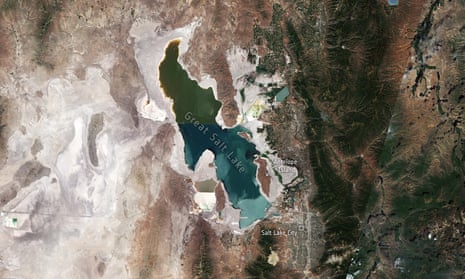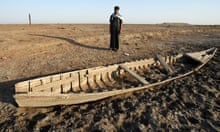New satellite images from the European Space Agency have illustrated the extent of dwindling water levels in the Great Salt Lake in Utah, a month after it reached its lowest water level ever recorded.
Highlighting falling water levels and the decreasing size of the lake, the report compares satellite images from 1985 and 2022. At its peak in the 1980s, it covered about 8,550 sq km (3,300 sq miles); in recent measurements, it has lost nearly half of its surface area from the historical average. The new record, registered last month, was the second historical low reached in less than a year.
After a 22-year megadrought that has gripped the south-west of the US, data from the US Geological Survey has also revealed that the decrease in water levels has left about 1,990 sq km of lakebed exposed.
The disappearance of the lake has been attributed to drought caused by climate breakdown and water use, along with the redirection of water from streams used to replenish the lake for use in residential spaces and agriculture.
The demand for the lake’s water has increased as the population of Utah climbs. Currently home to about 3.3 million people, it is projected that the population will increase by 66% by 2060, making it the fastest growing state in the US.

The lake is home to many animals, and with its associated wetlands welcomes about 10 million migratory birds every year. About 330 different species stop over in the lake for food, which is now under threat thanks to rising salt levels.
As well as endangering wildlife, the drying lake also poses threats to human health. Lakebed exposure releases dust containing dangerous remnants of mining activity in the region, such as copper and arsenic, which can be blown into nearby settlements and can cause respiratory problems if inhaled.
Officials suggest the lake is likely to continue shrinking until at least autumn or early winter, when rainfall and snow will begin to replenish some of the water lost.










